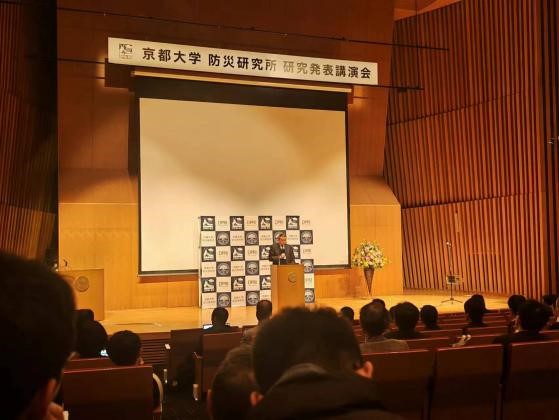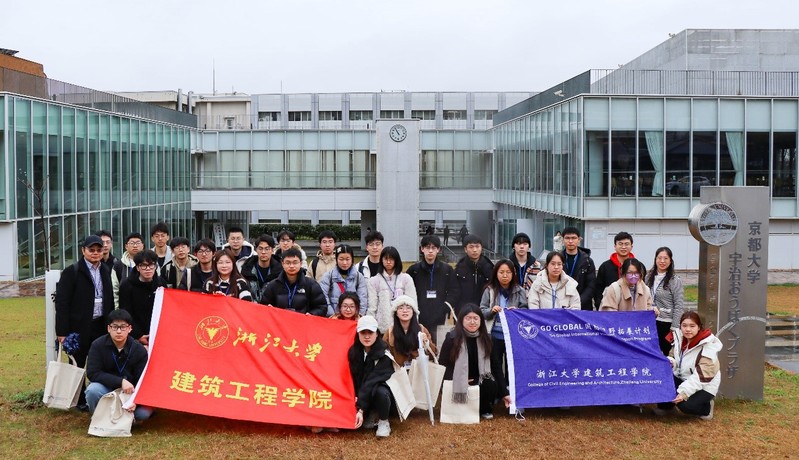Recently, a delegation from the college of Civil Engineering and Architecture at Zhejiang University had the privilege of attending an academic seminar at the Kyoto University Disaster Prevention Research Institute located on the Uji campus in Japan.
Situated in the Pacific Ring of Fire, Japan boasts one of the most active volcanic groups in the world. Due to its location at the juncture of the Pacific and Eurasian plates, Japan frequently experiences seismic activities caused by plate movements. Additionally, Japan lies within the Pacific Ring of Fire, one of the world's three major earthquake belts, making natural disasters such as earthquakes and volcanic eruptions common occurrences. This geographical setting imposes high demands on architectural design in Japan for disaster prevention.
The seminar began with an overview of the institute's research provided by Professor Hideo Nakabō, the director of the institute. He covered various fields including volcanology, seismology, hydrology, and the internal mechanisms of the Earth, introducing the academic backgrounds of the professors leading these research efforts.

In his closing remarks for the keynote speech, Director Nakakita Eiichi emphasized, “Tomorrow's report will showcase years of diligent study, experimentation, and research achievements by the undergraduate and graduate students of our institute. We eagerly hope for your attendance, support, suggestions, and questions, which are crucial for their progress.” The humility and enthusiasm in the director’s words reflected Kyoto University’s dedicated attitude towards research and its passion for academic pursuit.
The academic reports also discussed recent natural disasters, including the earthquake-induced landslides in Turkey and the earthquake on Japan's Noto Peninsula in January this year. The geological structure of the Noto Peninsula is unique, featuring landforms created by volcanic eruptions. This earthquake occurred during winter, and the accumulated snow exacerbated soil movement on the mountainsides after the quake, increasing the risk of landslides during the snowmelt season. This was a common finding highlighted in the report.
In a country like Japan, where natural disasters occur frequently, disaster prevention is of utmost importance. Experts from the Kyoto University Disaster Prevention Research Institute conveyed the destruction caused by natural disasters to human societies and the threats they pose to the safety of life and property. Effective disaster prevention measures are not only crucial for addressing current disaster risks but also for the sustainable development of future societies.
The report delved into Japan’s disaster prevention system, emergency response, and post-disaster recovery efforts in detail. Experts introduced Japan's disaster warning systems, emergency rescue mechanisms, and the process of post-disaster reconstruction. Advanced monitoring technologies and data analysis enable accurate prediction of disasters and trends, providing a critical time window for emergency response. In the post-discovery phase, Japan can quickly mobilize resources for rescue and reconstruction efforts, minimizing the losses caused by disasters.




